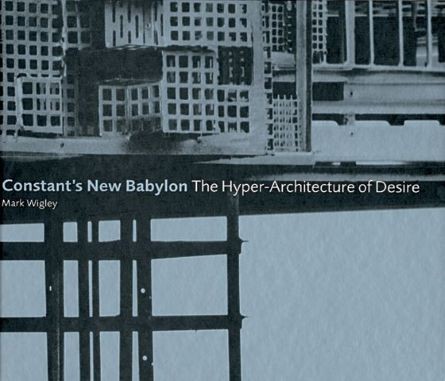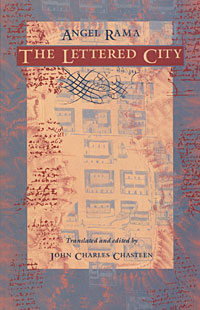Mark Wigley: Constant’s New Babylon: The Hyper-Architecture of Desire (1998)
Filed under book, catalogue | Tags: · architecture, capitalism, city, desire, situationists, urbanism

“From 1956 to 1974, the artist Constant Nieuwenhuys worked on a radical proposal for a future architecture. All traces of traditional buildings and social institutions would be abandoned. Everyone would drift through vast labyrinthine interiors and continuously reconstruct the spaces around them to satisfy any desire or stimulate new ones. Architecture becomes a pulsating display of group psychology. This monograph provides the first complete record of the project and includes a selection of texts by Constant and Guy Debord. Published on the occasion of the New Babylon retrospective at Witte de With, Rotterdam, in 1998.”
Publisher Witte de With, and 010 Publishers, Rotterdam, 1998
ISBN 9064503435, 9789064503436
256 pages
PDF (removed on 2018-12-5 upon request of image copyright holder)
Comments (2)Angel Rama: The Lettered City (1984–) [Spanish, English]
Filed under book | Tags: · city, education, history, history of literature, language, latin america, literary theory, literature, space

“Angel Rama’s La ciudad letrada was published in 1984, shortly after he had died in a plane accident in Spain. Since then, it has quickly established itself as one of the most daring, perspicacious and innovative analyses of Latin American history, literature and political culture. However, because it was not completed due to his untimely death, the book was an incomplete synthesis of several decades of literary criticism and history. Even if Rama had not written La ciudad letrada, his place on the canon of Latin American letters would have been secured by his pioneering work on intra-American comparative literary studies. Rama, appropriating a term from Cuban anthropologist Fernando Ortiz, introduced into Latin American literary studies the term ‘transculturation’, which sought to conceptualize the interaction between indigenous, criollo and mestizo cultures in Latin America, and in this way he gave a hermeneutic key for unlocking many key texts of Latin American letters.
Rama’s book is surely about letters, literature and writing, but it is also about cities, space, spatialization and the relationship between the syntax of languages and the order of space. The book is, in fact, what one may call a philosophical-historical-cultural essay that uses literature and the ‘writer’–el letrado–to elaborate a wide-ranging interpretative thesis about Latin America as a cultural unit. Its genre is thus not a literary theory, comparative literature, or even cultural studies, even if it contributes to these. In German one calls this genre Geistesgeschichte, which is neither a spiritual nor an intellectual history, but rather a history of the animating logic of a culture.” (from a review by Eduardo Mendieta, City, 2006)
First published by Ediciones del Norte, Hanover/NH, 1984
With an Introduction by Hugo Achugar
Publisher Arca, Montevideo, 1998
ISBN 9974400244
126 pages
English edition
Translated and with an Introduction by John Charles Chasteen
Publisher Duke University Press, 1996
ISBN 0822317575, 9780822317579
141 pages
via Oral Majority
Commentary (Cora Gorman Malone, 2010, in EN)
Commentary (Brantley Nicholson, 2011, in EN)
Publisher (EN)
La ciudad letrada (Spanish, 1984/1998, 6 MB, no OCR)
The Lettered City (English, pages 40 and 56 missing, 1996, 9 MB, no OCR)
Stanislaus von Moos, Chris Smeenk (eds.): Avant Garde und Industrie (1983) [English/German]
Filed under book | Tags: · aesthetics, architecture, art history, avant-garde, city, futurism, industry, machine, technology

Collected papers from a symposium held at the Department of Architecture at Delft University of Technology in May 1981.
Contributions in English from Niels L. Prak, Leonard K. Eaton, Tim Benton, and Jan van Geest; in German from Franziska Bollerey, Hanne Bergius, Stanislaus von Moos, Andreas Haus, Flip Bool, Martin Steinmann, and Otakar Máčel.
Publisher Delft University Press, Delft, 1983
ISBN 9062751091
176 pages
via TU Delft
PDF (29 MB)
Comment (0)
